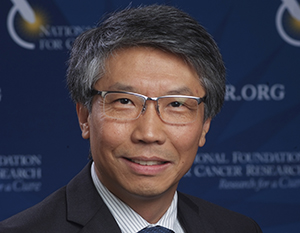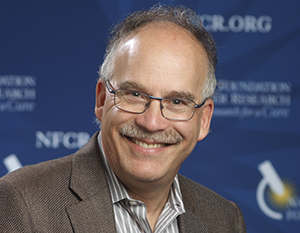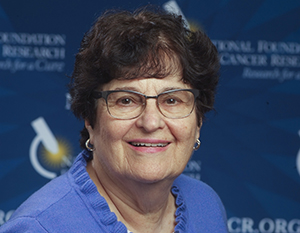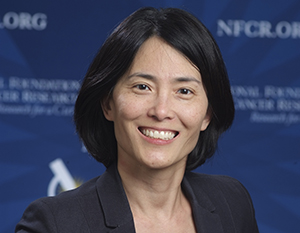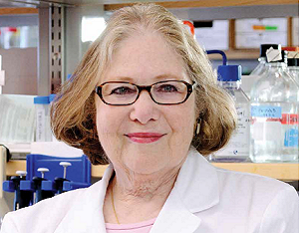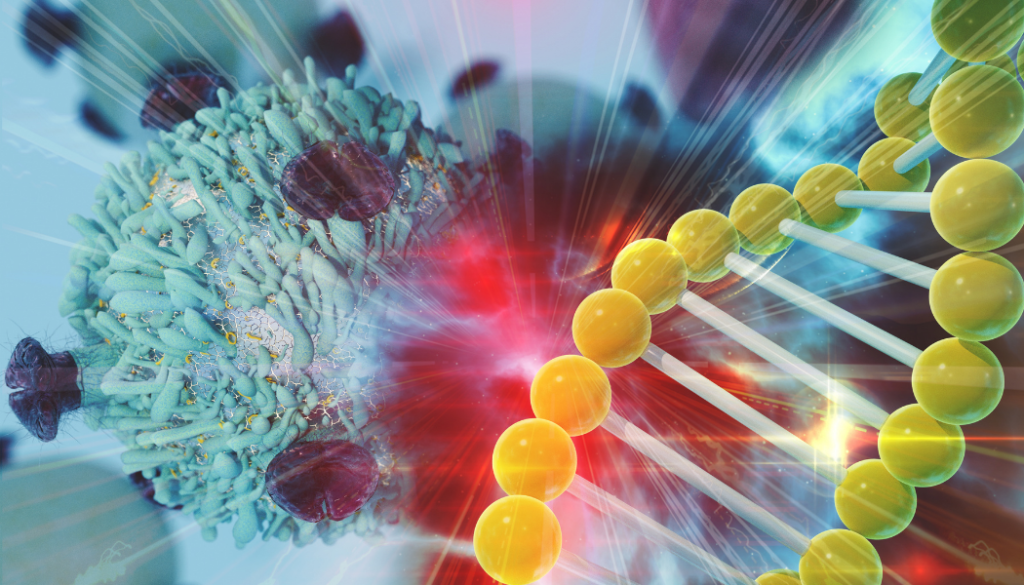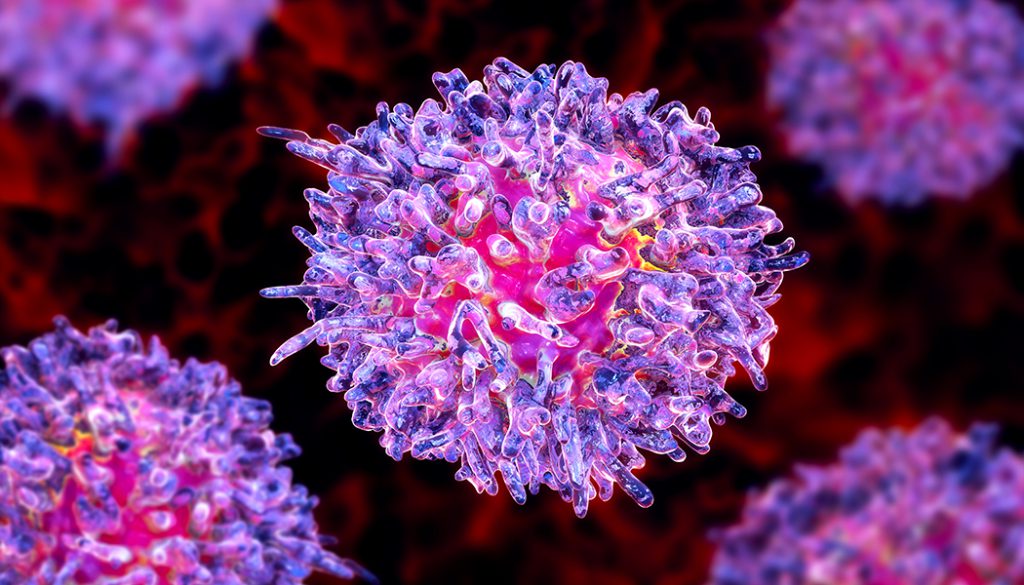Overcoming Drug Resistance
What is Drug Resistance?
Sometimes cancers are inherently unaffected by a specific drug and sometimes drug resistance occurs when cancers that have been responding to a therapy suddenly begin to grow again. In that latter case, the cancer cells resist the effects of treatment and the therapy being used will need to be changed.
Research is underway to investigate ways of reducing or preventing cancer drug resistance.
Support Breakthroughs in Overcoming Drug Resistance
Cancer Research and Beyond.
Related Content
New Treatment with Combined Immunotherapies is Effective for Drug Resistant Metastatic Lung Cancer
Immune checkpoint inhibitor (ICI) drugs, such as the PD-1inhibitors nivolumab and pembrolizumab, have provided unprecedented survival to patients in many types of cancer in recent years and are used for late-stage cancer treatment worldwide. Unfortunately, many patients who responded well to initial treatments gradually developed drug resistance, which resumed cancer progression. Tumor-infiltrating lymphocyte (TIL) therapy is a new type of immunotherapy. Unlike the antibody-based ICI drugs, TIL therapy is a cell-based therapy that uses a particular group of immune T-cells obtained from a patient’s own tumor tissues to treat their cancers. The Clinical Trial on TIL Therapy As TIL therapy has demonstrated its effectiveness in treating melanoma and other malignancies, oncologists at the H. Lee Moffitt Cancer Center & Research Institute in Florida are conducting a phase 1 clinical trial to see if combining the TIL therapy with the ICI drug nivolumab could help address the drug resistance problem for patients with metastatic non-small cell lung cancer. The clinical trial involved those patients who had developed initial progression under the monotherapy of PD-1 inhibitor nivolumab. Special immune T-cells were taken from patient’s tissues that were surgically removed from their tumors. These T-cells were grown to very large numbers (up to billions) in the laboratory and then infused back into the patients to let them seek and attack cancer cells inside their bodies. Encouraging Results of the Clinical Trial In early August 2021, very encouraging clinical trial results were published in the elite research journal Nature Medicine. Among the 13 evaluable patients, 11 had about a 35% reduction in tumor size (measured by “median best change”). Furthermore, two patients achieved durable complete responses that were ongoing 1.5 years later. From these results, the researchers believe that TIL therapy is generally safe and could be a promising new treatment option for metastatic non-small cell lung cancer. New Hope for Lung Cancer Patients Additional data will be obtained from this clinical trial and analyzed by the team at Moffitt Cancer Center. We look forward to seeing more positive results soon, which will bring more good news and new hope to lung cancer patients. To learn more about TIL therapy, watch our video with a real-life testimonial from a late-stage cancer patient here. Additional Reads You May Enjoy: Innovative Research and New Drug Development Continue to Prolong Survival Time of Lung Cancer Patients Small Cell Lung Cancer vs. Non-small Cell Lung Cancer: What’s the Difference? NFCR-Supported Researcher Leads Study Aiming to Understand Which Patients May Respond Best to Immunotherapy Stay up-to-date with the latest information on new drug development. Receive our monthly e-newsletter and blogs featuring stories of inspiration, support resources, cancer prevention tips, and more; sign up here. References: Tumor-infiltrating lymphocyte treatment for anti-PD-1-resistant metastatic lung cancer: a phase 1 trial. Nature Medicine, August 12, 2021. https://www.nature.com/articles/s41591-021-01462-y?proof=t%29
Understanding Drug Resistance in Cancer
One of the most frightening outcomes for a cancer patient is treatment failure. It often makes little sense to the patient and their medical team and leaves everyone uncertain about what is to come. One of the main reasons a cancer treatment may fail is because of drug-resistant cancer cells. Drug resistance is the reduction in the effectiveness of a medication to cure a disease. Cancer patients may experience drug resistance in a couple of ways. Sometimes cancers are inherently unaffected by a specific drug. It is often impossible to determine whether a cancer cell is intrinsically drug-resistant before beginning treatment. In other instances, drug resistance occurs when cancers that have been responding to a therapy suddenly start to grow again. This restart means that the cancer cells resist the effects of treatment, and the therapy in-use will need to be changed. Thankfully, many researchers are committed to learning why some cells are inherently resistant, while others are driven to discovering what causes drug resistance where a treatment was previously working. As these researchers deep-dive into the discovery of what causes drug resistance, others continue to explore alternative modes of treatment. Identifying new ways to treat cancer provides medical professionals flexibility when drug resistance occurs, allowing them to seamlessly change the course of action. Some of the world’s best and most dedicated researchers working to uncover the mystery behind drug-resistant cancer cells are Dr. Alice Shaw, Dr. Susan Horwitz, Dr. Amos B. Smith III, and Dr. Daniel A Haber. These National Foundation for Cancer Research-supported scientists have been working separately on projects exploring ways to successfully treat drug-resistant cancer cells. These projects are paving the way to overcoming drug resistance, creating better outcomes for all cancer patients. Dr. Shaw has identified unique drug combinations that have halted the growth of resistant cells in tumor models. This treatment is currently available in clinical trials and will likely lead the way in the development of effective therapies. Dr. Horwitz has spent a large proportion of her career fascinated by the way drugs interact with the human body. She is the scientist who discovered how Taxol works inside cells to halt cell division. Her passion for molecular pharmacology has her continually researching how drugs work in the body in collaboration with other passionate researchers. Dr. Smith is currently working with Dr. Horwitz on a project to develop new drugs to overcome the drug resistance problem for triple-negative breast cancer. With his expertise in bioorganic chemistry, materials science, and natural products, he is a great contributor to the development of these drugs. Dr. Haber and his exceptional team of researchers investigate the genetic abnormalities of cancer – from inherited mutations (with familial predisposition) to mutations that are acquired by tumors themselves – and the research aims to guide targeted drug therapies. Though medical professionals may not ever be able to prevent drug resistance, these research projects offer a promising future of alternative treatment options. To support research projects like those of Dr. Shaw, Dr. Horwitz, Dr. Smith, and Dr. Haber, please visit the NFCR website. Additional Reads You May Enjoy: Propelling the Fight Against Pancreatic Cancer Immunotherapy: Fighting Cancer and More? Genetic Testing: Learning […]
Leukemia Drug Finds New Use
Approved by the FDA in 1993, the drug cladribine offered hope for the then-fatal blood cancer called hairy cell leukemia, or HCL, and was soon expanded as a therapy for multiple sclerosis. Developed by NFCR scientist Dr. Dennis Carson at the University of California, San Diego, cladribine acts like a purine nucleoside agent, which prevents cells from making DNA and RNA, and can selectively kill hairy cell leukemia cells. Heralded as a breakthrough cure, cladribine remains the first-line treatment for HCL and is also tapped as a treatment for B-cell chronic lymphocytic leukemia. Now researchers have expanded its use to another deadly form of leukemia, drug-resistant T-cell prolymphocytic leukemia (T-PLL). In a small study, T-PLL patients were desensitized to the antibody drug, alemtuzumab when it was combined with cladribine; the cancer essentially lost its drug resistance. In seven out of eight patients, the cladribine-alemtuzumab combo resulted in complete remissions, and a partial remission in the final patient. As of 2015, some patients remain in remission, although others have passes away. Alemtuzumab is marketed under the name Campath; cladribine under the name Leustatin. Considered very rare, T-PLL is an aggressive cancer of the out of control growth of mature T-cells, the assassins of the immune system. Chromosomal abnormalities are a hallmark in T-PLL patients; the most common chromosomal abnormalities are inversions or translocations involving chromosome 14 that result in mutations to the proto-oncogene TCL-1 (oncogenes are genes which in certain circumstances can transform a healthy cell to a cancerous one). Also frequently detected in patients with T-PLL are abnormalities in chromosome 8, primarily trisomy 8q, which is an extra copy of genetic material on the long arm (q) of chromosome 8. Deletions or mutations to the tumor suppressor gene ATM have also been observed in patients with T-PLL. Symptoms include bruising easily, rashes or skin lesions, swollen lymph nodes, quickly feeling full when eating, abdominal pain on the left side of the body due to a swollen spleen, and fullness. Cladribine was a trailblazer at the time of its introduction over 20 years ago. “[It was] a targeted agent directed against lymphocytes at a time when there was no such thing as targeted agents,” Carson recalls; targeted drugs and therapies are now among the hottest fields in medicine. Other treatments for T-PLL include combining alemtuzumab with the drug pentostatin, the FMC drug combination (fludarabine, mitoxantrone, and cyclophosphamide) followed by intravenous alemtuzumab, and hematopoietic stem cell transplantation. While it is not FDA-approved as a treatment for T-PLL, the drug nelarabine can also be used in some cases. Researchers admit that the initial trial of the cladribine-alemtuzumab combination dealt with a very small number of patients and that larger studies will have to be done per standard medical protocol to confirm safety and efficacy. That being said, the drug combination may move more quickly out of the trial phase and into practice due to the fact that both drugs are already approved by the FDA. References Fike, Bradley. (2015). Leukemia drug cladribine may get new use. Retrieved from: https://www.sandiegouniontribune.com/business/biotech/sdut-new-cancer-use-cladribine-carson-2015jun24-story.html



